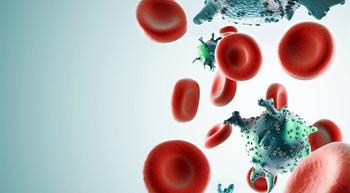
Long-Term Pain Management in Blood Cancers: When Are Opioids Appropriate?
Blood cancer survivors are living longer than ever, making safe pain management an important concern.
People with hematologic malignancies are living longer than ever, bringing an important question into focus: what is the appropriate way to manage their chronic pain?
Opioids are typically the first-line defense against pain in patients with cancer, but long-term pain has risks, such as addiction or overdose. Some patients with cancer may be at a higher risk for these maladies, making it even more important to find an appropriate pain management strategy for this population, explained Dr. Holly L. Geyer, a hospital internal medicine practitioner with a specialty in addiction medicine at the Mayo Clinic.
Geyer published research and guidelines on the long-term pain management for blood cancer survivors.
“Individuals with hematological malignancies suffer with significant symptom burdens, despite not necessarily having a death sentence from their disorder,” she said in an interview with CURE®. “A great example would be myeloproliferative neoplasms, which is one group I’ve studied closely. (Patients with) essential thrombocythemia can have a normal life expectancy, but they can feel horrible.”
Opioids work best for short-term pain, which the Mayo Clinic defines as pain that lasts 45 days or fewer. However, when used far beyond that, the brain starts to remodel the way that it perceives pain, and risk for addiction increases.
Thus, for the long-term, non-pharmacological methods should be considered for pain management. This can include physical or occupational therapy, acupuncture, Tai Chi or other non-opioid drugs, such as non-steroidal anti-inflammatory drugs (NSAIDs) like Aspirin.
“Then once we start to deal with more symptomatic pain – so moderate to severe pain – it is not inappropriate at all to consider the use of opioid therapy,” Geyer said. “This is where we really recommend that people start going down the lines of determining the appropriateness of opioid therapy based on patient risk factors and their personal use history. Opioids started at a low dose can be titrated up fairly safely if people are monitored.”
Before starting opioid therapy, patients should talk with their health care team about any potential risk factors for opioid misuse. Geyer said that addiction tends to be observed in individuals between the ages of 18 and 45, with a slightly higher predominance in males. Those with a history (either personal or familial) of addiction to other substances – such as other drugs or alcohol – tend to have a higher-than-normal risk, too.
Patients with mental health disorders, such as depression, anxiety, bipolar, schizophrenia and post-traumatic stress disorder, may be at increased risk for opioid misuse, too.
“So, it’s important to screen for these before anyone is initiated on opioid therapy. It’s not a direct ‘do-not-give-the-drug’ kind of situation, it’s not a direct contraindication. It’s just a warning sign that these people may need to be monitored more closely,” Geyer said.
For more news on cancer updates, research and education, don’t forget to




